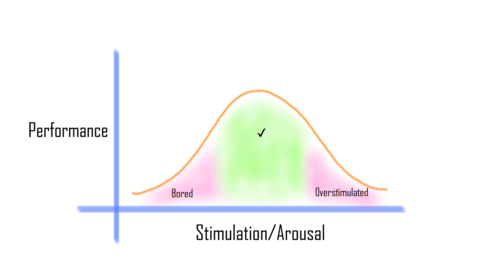Movement, Focus, and Stimulation — the Yerkes-Dodson Effect
In 1984, researchers Humphreys and Revelle found that when impulsive people consumed caffeine, they became more effective learners. This was not a surprising result.
What they had found confirmed a well-known fact about learning: up to a point, performance increases with physiological or mental arousal. This is called the Yerkes-Dodson Law, or the Yerkes-Dodson Effect, which says that that performance increases with physiological or mental arousal, but only up to a point. When levels of arousal become too high, performance decreases.

For most tasks, performance improves as arousal increases. This is the rising part of the inverted-U curve shown above. For some more tasks, too much stimulation causes the curve to fall: this is where the negative effects of stimulation and stress overtake the positive effects.
This effect is widely seen in scientific studies. For example, it is hypothesized to be the reason stimulant drugs help people with ADHD is that the drugs increase the person’s state of arousal. In fact, one of the most common complaints of ADD/ADHD sufferers is constant boredom.
What does this mean for me?
If you or your child suffer from ADD/ADHD and related hyperactivity or lack of focus, adding some stimulation and movement can increase the state of arousal. This produces better focus and cognitive performance.
Twiddler products can help. Twiddlebands are fidget bands that provide easy and quiet movement stimulation. Please see our product listings for more details.